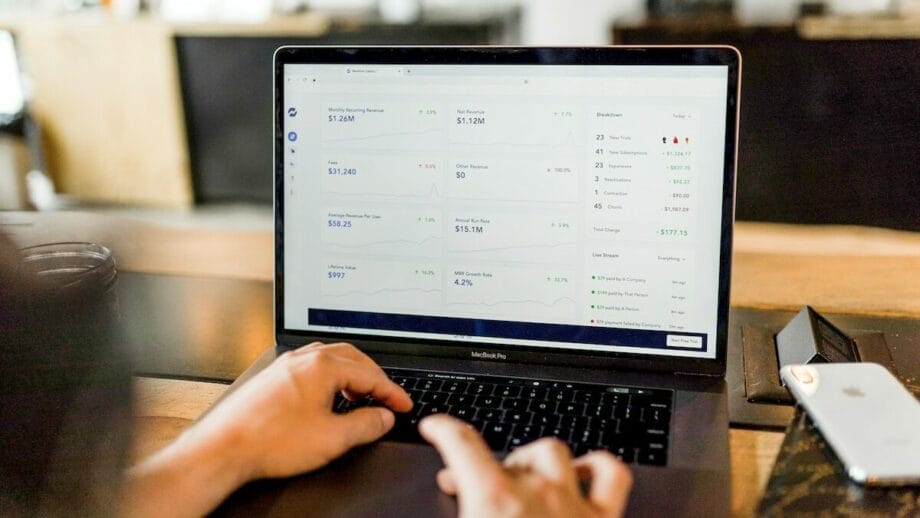It’s surprising how many business owners overlook the impact of a well-curated product listing. And that’s a shame. Because that’s how your goods make their first acquaintance with prospective buyers. If your listings don’t make the cut, the first impression becomes the last one. This ripple effect can, unfortunately, resonate through to your bottom line.
As you decide to optimize product listings to increase sales, it may require some effort. Especially if your catalog has thousands of items. That’s a completely different story because it entails extensive market research, competitor analysis, and data collection at scale — all are time-consuming endeavors.
However, you can accelerate online retail improvement with eCommerce web scraping. So, let’s explore how this solution will help you optimize product listings and drive a robust bottom line.
What is Data Scraping?
At its core, web scraping involves the automated extraction of data from websites. To be more specific, you run a scraper, a tool designed to access web pages and retrieve the desired data, navigate through the HTML code, identify the pieces of information required, and pull them for further storage and analysis. The greatest part of web data extraction is that you can tirelessly churn through pages at a scale and speed a human researcher could only dream of.
The scope of data you can harvest is diverse. Web scrapers will fetch:
- Structured data stored in fixed fields within a record, file, or database (prices, customer ratings, or stock levels).
- Unstructured data doesn’t follow a specific form (text from images or reviews).
- Semi-structured data doesn’t reside in databases but possesses some organizational properties (XML files or JSON documents).
Based on the data source, you can collect data from:
- Websites (competitor online stores, blogs, etc.).
- Marketplaces (Amazon, eBay, Walmart, etc.).
- Social media (Facebook, Instagram, X (former Twitter), TikTok, etc.).
- Forums and review websites (Reddit, Quora, etc.).

But the trick is that web scraping is a technical endeavor. To extract data from a website online, you’ve got to have a team that knows how to write scripts to retrieve data. The coding languages for scraping include Python or C#, and the frameworks are Scrapy or .NET. On top of understanding these languages and libraries, tech experts should understand HTML and CSS to spot elements for harvesting. Also, engineers should have an idea of how to handle complex web page structures and exceptions. For example, how to solve CAPTCHAs or loading errors.
If you don’t have an in-house tech team well-versed in these activities, it’s better to outsource a web scraping service from a reputable vendor. They’ve been there, done that, and know how to circumvent the common roadblocks that may come in the way.
Related: Scrape Smarter, Not Harder: The Benefits of Using Mobile Proxies for Web Scraping.
eCommerce Web Scraping to Create Effective Listings
According to Amazon, 28% of its shoppers complete a purchase in 3 minutes or less. It means that as a seller, you don’t have much time to convince the buyer to place an order with you. Your listing should sell right away.
But along with attracting more buyers, there are more implications in improving your product listings. eBay convinces its merchants that enhancing listing quality is one of the key ways to improve store ranking for greater visibility.
As you choose web scraping strategies for sales growth and fine-tuning your listings, you harvest a rich array of data points from various sources. Here’s how it can be beneficial for your eCommerce business.
Improve On-page SEO for eCommerce
To begin with, help your customers discover your store and the goods you offer. For this, you’ll need to improve different parts of your listing. Namely, the product title, description, and metadata.
Let’s say, you want to make Amazon keyword optimization. Before you move further, you would like to know what keywords drive traffic. As you have thousands of listings, manual keyword analysis will take ages. But not with web scraping for SEO. In this case, you use a crawler to sift through successful competitor listings. The tool does the job and brings the list of high-ranking keywords you can then use in your titles or descriptions.
Along with spotting keywords, you’ll want to know what titles resonate better with your audience and encourage clicks. With a website scraper, you’ll get to know whether prospects prefer short and to-the-point titles to descriptive ones or vice versa.
Elevate Your Product Page Content
Each element you use, from text to visuals, is important for nudging visitors toward making a purchase. However, in a market saturated with choices, how do you ensure your product page content stands a cut above the rest? Of course, everything starts with data analysis.
If you’re serious about the eCommerce conversion optimization of your store, web scraping will help you collect data from competitor product pages. With these insights at hand, you’ll be able to see how they position similar products and what aspects they emphasize. You’ll need this information to sculpt your own USP. As you compare common threads and spot the gaps, you can craft a narrative for a fresh perspective.
Also, the recent findings reveal that high-quality product imagery is important to 88% of online shoppers. 77% of respondents confirmed that visuals increased their confidence in purchasing decisions, especially if that’s a website they’ve never dealt with before. So, you should care about your visual content strategy as well. Because the type of imagery, the use of videos, interactive visuals, and branded content, all contribute to the engagement quotient of a product page.
Web crawling tools will visit websites or marketplace pages and capture the images or videos from them. Then, the development team will upload them to the convenient storage space so you can analyze the collected information to make decisions about your product page aesthetics.

Use Price Scraping to Keep Your Offer Attractive
It has been proved that a 1% increase in product pricing yields an 11% increase in profit. But things are not that simple. To drive sales, your offer should be more attractive to the buyers than other options on the market. The study conducted by Harvard Business researchers revealed this connection.
So, to maintain a lucrative offer in the market, you’ve got to continuously monitor how other sellers price their goods. With real-time scraping prices from websites, you’ll get immediate insights whenever a competitor alters their price points. For instance, if a competitor slashes prices, you’re instantly armed with the knowledge to assess and recalibrate your pricing to maintain market competitiveness.
Beyond the usual pricing strategies, there are discounts, special offers, and sales, especially during festive seasons or clearance periods. So, as you monitor the market with a web page scraper, you collect information about when these events are launched, the depth of discounts offered, and the types of products put on sale.
See also: Today’s Brand Protection: Tools, Web Scrapers & Proxies.
Keep Products in Stock
All the eCommerce optimization steps make sense as long as you keep units available for purchase. But it’s not just enough to fill up the shelves and hope for the best. You’ve got to have the right stuff, at the right time, and in the right quantity. Sounds like a tall order? Not with data scraping.
As you use automated data collection from marketplaces, competitor sites, and consumer forums, you get the feel of what products are popular. This way, you know what items you need to stock up on to align your inventory with the demand.
And if you’re curious about how your competitors are managing their inventory, data crawling will be of great help to you. For example, you’ll be able to spot when a particular seller is out of hot-selling items. Won’t it be a great chance to swoop in and fill that void? Also, as you know the rival’s stock levels on shared products, you get the clue to either step up or ease down on your own stock levels.
In addition to that, it’s always a good idea to know what’s happening in the minds of your customers. Have the beauty bloggers set a trend for makeup with white eyeliner? If you sell cosmetics, get ready for an increase in demand for this product type. Has the time for barbecues come? Stock up on fire starters.
Enhance Customer Experience
88% of customers say that the experience the brand delivers is as important as the product itself. That’s why 73% of business leaders noted a link between customer service and business performance. Hence, nurturing relations with your buyers and creating experiences that make them want to come back should be one of your priorities. For this, you’ll want to scrape information from websites. But how exactly can it help in your eCommerce sales increase strategies?
For starters, we’ve already mentioned that—you’ll make it easier to find your product, offer relevant information about it, and market your item at a favorable price. Along with that, you can also use web scraping to fetch insights from reviews to understand what truly matters to your audience. Parse different sources—product pages, forums, social media, and other sources—to learn what buyers love, appreciate, and dislike. Interestingly, you can get data from the web in Excel, doc, or any other format.
How to Get Started with Web Data Scraping
Web scraping is an effective tool to collect information from the internet, but only when done right. Here are the tips that will help you get started with this activity.

1. Decide Whether Data Mining is Suitable for Your Business
First, understand whether data harvesting fits your needs. Perhaps, your business is at the stage or in the market that won’t bring formidable ROI from web scraping activities.
| Factor | Web scraping | Other methods |
|---|---|---|
| Market competition | High competition, need to monitor prices & stock | Low competition, stable market |
| Product listings | Need to optimize listings, enhance SEO | Already optimized, high organic visibility |
| Pricing strategy | Dynamic | Fixed |
| Inventory management | Large inventory, need for demand forecasting | Small inventory |
| Legal considerations | Data is publicly available | Data restricted |
| Resources | Adequate | Limited |
| Technical expertise | In-house proficiency or willingness to outsource | Lack of skills |
| Data volume | High | Low |
2. Identify Your Goals
As you figure out that you need data at scale, understand what business objectives you’re going to meet with this activity. Are you looking to refine pricing strategies, enhance product listings, or perhaps get a leg up on the competition? Then, outline the key goals of your scraping project. It means understanding whether you need to gather pricing data or spot best-selling products.
Moreover, decide on the success metrics. This will help you measure the effectiveness of your data collection effort.
3. Start Small, Scale Gradually
If you’ve never dealt with web scraping, start with a manageable framework. To be more specific, smaller datasets, simpler objectives, and fewer variables. This will make the process less daunting and enable you to gently climb up a learning curve.
Also, smaller-scale projects require fewer resources (time, money, or talent). If you run a small or mid-sized business operating on a tight budget, it’s better to first see whether the game is worth the candle.
4. Clean and Organize Data
Within your scraping project, you’ll deal with raw data. It means that you can encounter errors, duplicates, inconsistencies, or missing values on your datasets. As a result, get misleading insights. So, common data cleaning tasks include removing duplicates, handling missing values, correcting typos, and standardizing data.
Data organization is another step in data preparation. During this phase, you make it easier to derive insights from it. Here, you usually:
- Group similar data together.
- Create a consistent schema.
- Create indexes.
You can pull data from the website to Excel or Google Sheets for basic data cleaning and organization. If you’re into more complex tasks, you should consider using more sophisticated software like SQL Server.
Related: How Startups can Leverage the Benefits of Web Scraping?
Conclusion

Undoubtedly, if you’re wondering how to optimize product listings and increase your eCommerce sales, you should consider web scraping. It’s the best solution for competitive price analysis, enhancing product listings, improving customer experience, and understanding the market.





